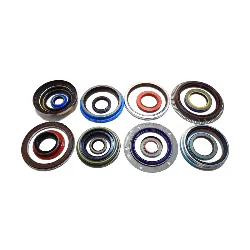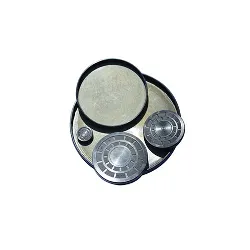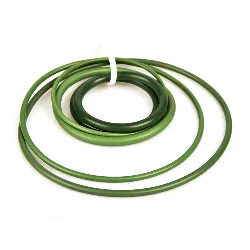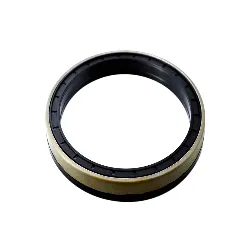The selection of rubber material in oil seals significantly impacts their performance, durability, and suitability for different applications. Oil seals prevent the leakage of lubricants and the ingress of contaminants, playing a vital role in the efficiency of mechanical systems. This article delves into the characteristics and applications of various rubber materials used in oil seals, highlighting their unique properties and benefits.
1. Nitrile Rubber (NBR)
Nitrile rubber is renowned for its resistance to petroleum-based oils and fuels. It exhibits excellent mechanical properties, such as abrasion resistance and tensile strength, which make it ideal for automotive and industrial applications. NBR is cost-effective and performs well in moderate temperature ranges (-40°C to 120°C). However, it is less resistant to ozone, sunlight, and extreme temperatures, limiting its use in outdoor and high-temperature environments.
2. Fluoroelastomer (FKM)
Fluoroelastomer, commonly known as FKM, is preferred for applications requiring high chemical and temperature resistance. It operates effectively in temperatures ranging from -20°C to 250°C and resists a broad spectrum of chemicals, including oils, fuels, and solvents. This makes FKM ideal for aerospace, automotive, and chemical processing industries. Its higher cost, however, can be a drawback for some applications.
3. Silicone Rubber
Silicone rubber stands out for its wide temperature range (-60°C to 200°C) and excellent flexibility. It resists ozone, UV radiation, and weathering, making it suitable for outdoor and automotive applications. Despite its advantages, silicone rubber has lower mechanical strength and abrasion resistance compared to other elastomers, which restricts its use in high-wear applications.
4. Ethylene Propylene Diene Monomer (EPDM)
EPDM is valued for its superior resistance to weathering, ozone, and water, making it suitable for outdoor applications and environments involving water and steam. It also resists polar chemicals and is commonly used in HVAC systems, automotive cooling, and brake systems. However, EPDM is incompatible with petroleum-based oils and fuels, limiting its use in oil and fuel-related applications.
5. Polyacrylate Rubber (ACM)
Polyacrylate rubber is noted for its resistance to heat, oil, and oxidation. It is particularly suitable for automotive applications, including transmission and power steering systems, due to its ability to withstand high temperatures. However, ACM has limited flexibility at low temperatures and poor resistance to acids and bases.
6. Hydrogenated Nitrile Rubber (HNBR)
HNBR, a hydrogenated form of NBR, offers enhanced heat and chemical resistance, allowing it to perform well in higher temperatures and more demanding environments. It retains the good mechanical properties of NBR while providing better resistance to aging and wear. HNBR is ideal for automotive and industrial applications requiring durability and high performance. Its cost is higher than standard NBR, which can be a consideration in material selection.
7. Perfluoroelastomer (FFKM)
Perfluoroelastomer offers the highest chemical and temperature resistance among elastomers, operating effectively up to 327°C. It resists nearly all chemicals and is used in extreme environments, such as semiconductor manufacturing, oil and gas, and aerospace applications. The main disadvantage of FFKM is its high cost, which restricts its use to critical applications where other materials cannot perform.
Selecting the appropriate rubber material for oil seals is crucial for ensuring the reliability and efficiency of mechanical systems. Each rubber type has distinct properties that make it suitable for specific applications, from general-purpose uses to extreme environments. By understanding the characteristics and applications of various rubber materials, engineers can choose the best material for their specific needs, optimizing the performance and longevity of their oil seals. In the realm of oil seals, material selection is key to achieving the desired balance of performance, durability, and cost-effectiveness.












